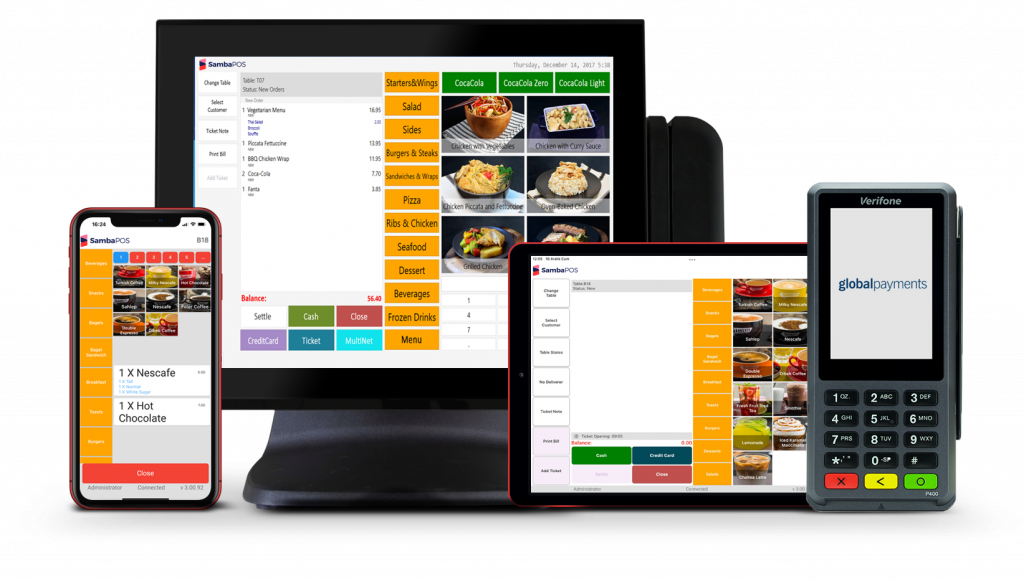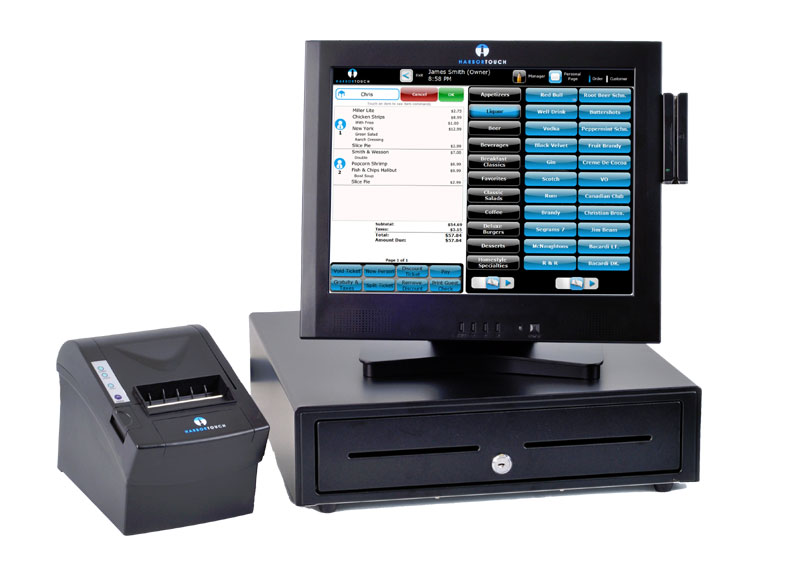Exactly How POS System Functions: A Comprehensive Guide for Entrpreneurs
A POS system functions as an essential tool for contemporary services, incorporating various components to streamline procedures. It includes equipment like barcode scanners and software application up for sale monitoring. This system not just refines purchases but also manages stock and examines consumer actions. Understanding its capability can significantly impact an organization's effectiveness and decision-making. What are the crucial elements that add to this performance? Discovering these parts supplies beneficial understandings.
Recognizing the Elements of a POS System
A Point of Sale (POS) system is made up of numerous key parts that interact to facilitate purchases and take care of service procedures. At its core, the equipment consists of gadgets such as a money register, barcode scanner, receipt printer, and payment terminal, all essential for refining sales (Restaurant POS Software). The software part handles inventory, sales monitoring, and client data, supplying important understandings for service decisions.Additionally, databases save transaction documents and customer details, making sure data integrity and protection. Network connectivity makes it possible for real-time updates and accessibility to cloud-based services, enhancing functional effectiveness. Individual interfaces, made for ease of usage, enable staff to browse the system quickly, minimizing training time. With each other, these components develop a cohesive system that simplifies the sales process, boosts customer care, and help in efficient monitoring of service sources. Understanding these parts is important for company owner looking for to optimize their POS systems
How Sales Deals Are Refined
When a consumer makes a decision to make a purchase, the sales deal launches a collection of organized steps within the POS system. Initially, the cashier inputs the items being bought, which are scanned with a barcode visitor or by hand gotten in. This action obtains item details, including rates and appropriate tax obligations, from the system's database.Next, the customer is provided with the total quantity due. The POS system after that refines the payment, whether through money, credit history card, or mobile settlement approaches. For digital settlements, the POS firmly connects with settlement cpus to license and verify the transaction.Once the repayment is confirmed, the system generates a receipt, which can be printed or sent digitally. This receipt acts as evidence of acquisition for the client. The deal data is videotaped in the system, ensuring accurate sales documents and financial tracking for the business.
Inventory Monitoring and Monitoring
Reliable supply monitoring and monitoring are essential components of a POS system, as they guarantee that businesses maintain suitable supply levels and reduce discrepancies. A durable POS system permits real-time inventory updates, mirroring sales and returns instantly. This allows company owner to monitor supply levels accurately, making sure that popular things are readily offered while avoiding overstocking of much less prominent products.Additionally, progressed POS systems provide attributes such as automatic supply informs and reorder recommendations, simplifying the purchase process. Barcoding and RFID modern technology improve accuracy in tracking supply motion, decreasing human mistake. Considerable reporting tools give insights into inventory turnover rates, aiding services make informed decisions regarding buying and product offerings. Eventually, reliable stock administration with a POS system not only enhances functional effectiveness but likewise enhances customer satisfaction by making sure product accessibility.

Examining Consumer Information and Insights
Consumer information analysis serves as a powerful device for organizations making use of a POS system. By collecting and taking a look at transaction information, companies can discover valuable insights about customer actions and preferences. This evaluation allows them to identify buying patterns, peak purchasing times, and popular items, consequently notifying stock decisions and marketing strategies.Additionally, businesses can segment their customer base, enabling for personalized marketing initiatives that satisfy specific Clicking Here demographics or acquiring behaviors. Recognizing client commitment patterns likewise assists in developing targeted promos and incentives programs.The data gleaned from a POS system can also reveal understandings right into consumer responses, allowing services to make enlightened choices relating to item offerings and solution renovations. Inevitably, leveraging customer data efficiently can enhance the general purchasing experience, foster customer fulfillment, and drive profits development.
Advantages of Applying a POS System
Implementing a POS system offers numerous advantages that can significantly improve company operations. To start with, it enhances transaction processes, reducing wait times and boosting consumer contentment. By automating sales procedures, organizations try here can decrease human mistake and assurance precise record-keeping. Furthermore, a POS system offers important data analytics, making it possible for owners to track sales trends and inventory levels in real-time. This understanding supports notified decision-making, assisting to maximize stock management and marketing strategies.Moreover, several POS systems incorporate with other service devices, such as accountancy software application, simplifying monetary administration. Boosted employee monitoring features, such as tracking hours and efficiency, further contribute to functional efficiency.Lastly, the implementation of a POS system can lead to raised profits through boosted client experiences and calculated insights, inevitably promoting service growth and sustainability.
Often Asked Inquiries
What Sorts Of Businesses Can Take Advantage Of a POS System?

Just how Much Does a POS System Normally Cost?
The expense of a POS system normally ranges from a couple of hundred to several thousand bucks, depending upon attributes, helpful site equipment, and software program - Restaurant POS Software. Organizations should take into consideration ongoing fees for maintenance, assistance, and transaction handling when budgeting

Can I Incorporate a POS System With Existing Software?
Integrating a POS system with existing software program is usually possible. Lots of systems use APIs or built-in compatibility functions, allowing businesses to streamline procedures and boost performance by attaching various software application applications properly.
What Training Is Required for Personnel to Use a POS System?
Training for personnel to make use of a POS system generally consists of understanding software capabilities, processing transactions, handling stock, and taking care of consumer communications - Restaurant POS Software. Practical presentations and hands-on practice enhance effectiveness and confidence being used the system efficiently
What Occurs if the Web Drops While Using a POS System?
If the net decreases during POS system usage, deals may be interrupted. Several systems supply offline abilities, permitting fundamental procedures to continue, however full capability, including real-time supply updates, will certainly be restricted.